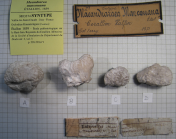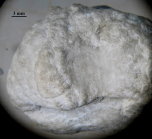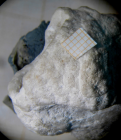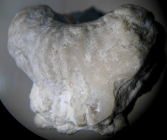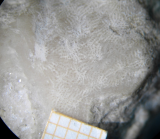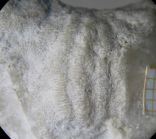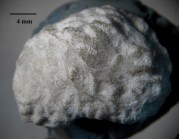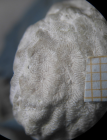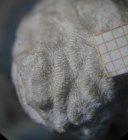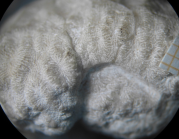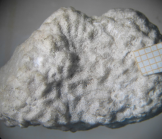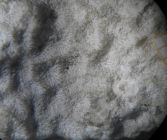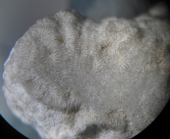
| Intro | | About | | Wiki | | Search traits | | Data explorer | | Literature | | Definitions | | Sources | | Webservices | | Statistics | | Feedback | | Editors | | Log in |
Scleractinia name detailsMeandrarea Étallon, 1859 †
1511736 (urn:lsid:marinespecies.org:taxname:1511736)
unaccepted > junior subjective synonym (misspelling)
Genus
Meandrarea marcouana Étallon, 1859 † accepted as Comoseris marcouana (Étallon, 1859) † (type by original designation)
marine,
fossil only
Étallon, M.A. (1859). Études paléontologiques sur la Haut-Jura: Rayonnés du Corallien. <em>Mémoires de la Société d'Emulation du Département du Doubs, Troisième Série.</em> 3: 401-553. [details]
Description (based on syntypes) Massive meandroid corallum with short to elongated valleys. No observed epitheca. Intracalicular...
Description (based on syntypes) Massive meandroid corallum with short to elongated valleys. No observed epitheca. Intracalicular increase producing sinuous valleys, rather radially arranged, at least at the margin of the colony. Valley septa not systematically present and distinct, collines without ambulacrum, rather tholiform, occasionnaly tectiform. Radial elements pennular, perforate, anastomosed, straight to curved, subequal. Distal edge moniliform with equal regular teeth. No palis. Radial symmetry disturbed by bilateral symmetry, elongation of valleys and anastomoses of septa. Endotheca not observed. Center of calices with a small fossa not very distinct in which small trabecules may be tightly arranged. Synapticulae present, especially near the collines. Wall probably synapticulothecal. [details]
Hoeksema, B. W.; Cairns, S. (2025). World List of Scleractinia. Meandrarea Étallon, 1859 †. Accessed at: https://www.marinespecies.org/scleractinia/aphia.php?p=taxdetails&id=1511736 on 2025-05-06
Date action by
original description
Étallon, M.A. (1859). Études paléontologiques sur la Haut-Jura: Rayonnés du Corallien. <em>Mémoires de la Société d'Emulation du Département du Doubs, Troisième Série.</em> 3: 401-553. [details]
source of synonymy Cairns, S.D., R. Baron-Szabo, A.F. Budd, B. Lathuilière, E. Roniewicz, J. Stolarski & K.G. Johnson. (2010). Corallosphere. , available online at http://www.corallosphere.org [details] From editor or global species database
Description (based on syntypes) Massive meandroid corallum with short to elongated valleys. No observed epitheca. Intracalicular increase producing sinuous valleys, rather radially arranged, at least at the margin of the colony. Valley septa not systematically present and distinct, collines without ambulacrum, rather tholiform, occasionnaly tectiform. Radial elements pennular, perforate, anastomosed, straight to curved, subequal. Distal edge moniliform with equal regular teeth. No palis. Radial symmetry disturbed by bilateral symmetry, elongation of valleys and anastomoses of septa. Endotheca not observed. Center of calices with a small fossa not very distinct in which small trabecules may be tightly arranged. Synapticulae present, especially near the collines. Wall probably synapticulothecal. [details]Remark Meandraraea is currently distinguished from Comoseris by the straight series, the tectiform collines, a skeleton less porous... (see Roniewicz 1976) Based on the description of the four syntypes of the type-species, I see no reason to keep this genus apart from Comoseris. 19 Jurassic and 21 Cretaceous nominal species known. [details] |
